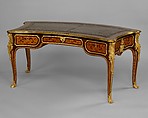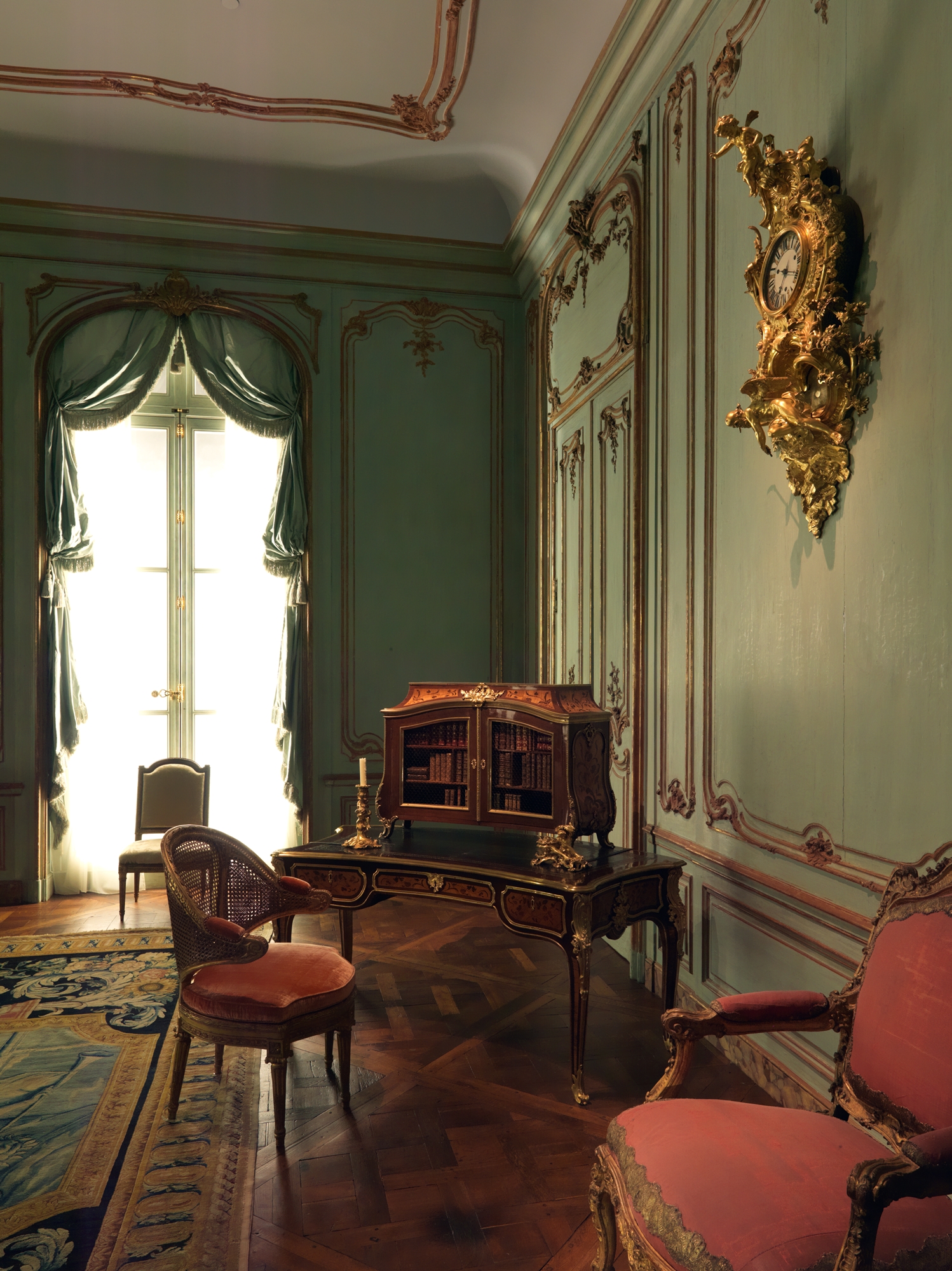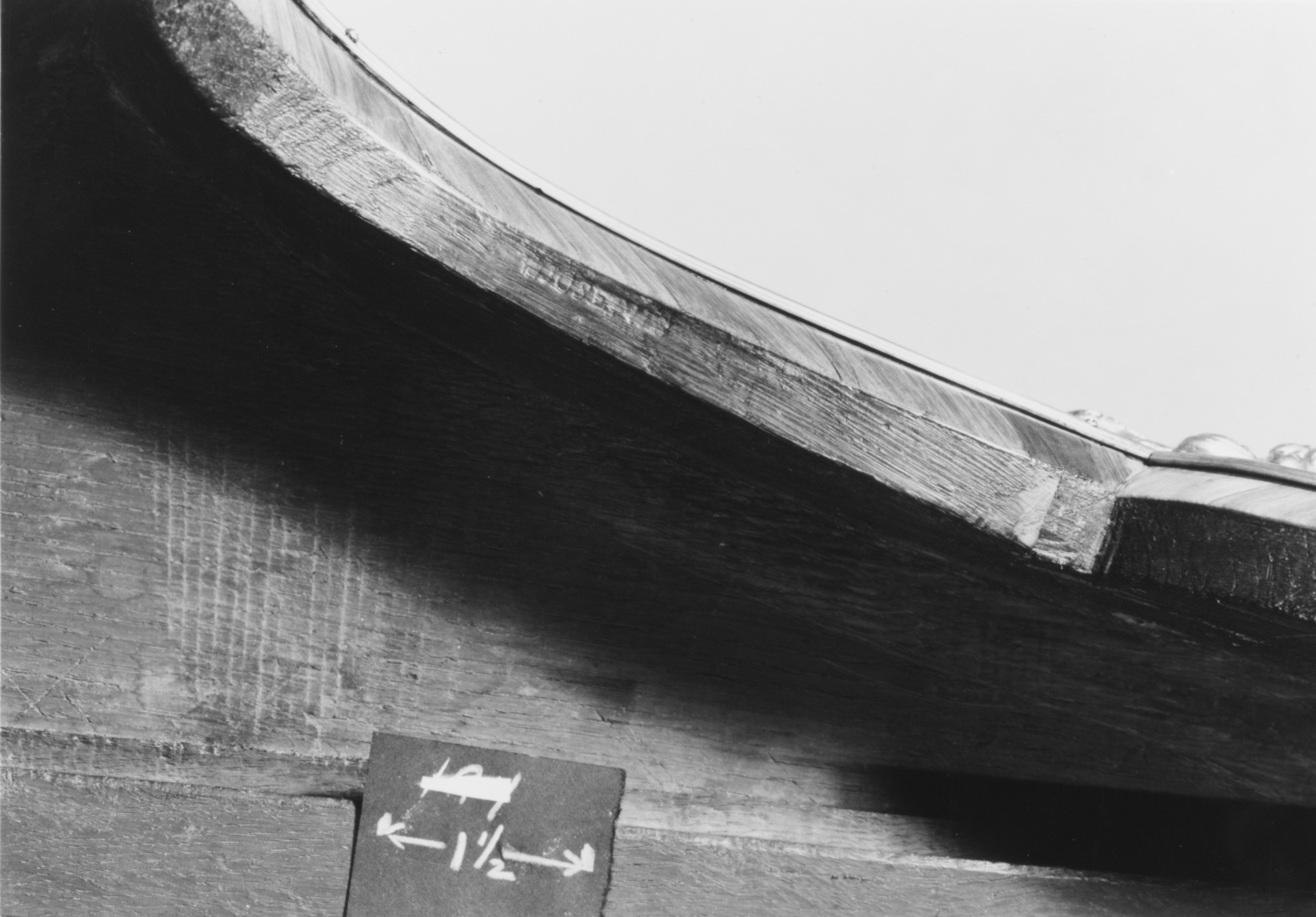Writing table (part of a set)
Joseph Baumhauer French
This beautiful marquetry writing table of unusual shape, with a rounded edge at the back and sides tapering slightly to the front, must have originally been intended to stand against the curving wall of a room. The back of the apron, which was not intended to be seen, was veneered with plain purplewood, while the panels of the side and front are marquetried with trailing stylized flowers and end-cut kingwood on a tulipwood ground. This type of marquetry is known to occur on other pieces of furniture signed by Joseph Baumhauer, as well as on furniture by the cabinetmaker Bernard van Risenburgh, whose signature consisted of the initials BVRB.
A filing-cabinet or serre-papiers, with rounded back and corresponding marquetry, originally stood in the center of the writing surface of the table, against the wall. This complementary piece was acquired separately and enhances the table as it is shown in the Austrian Room from the Palais Paar.
Joseph Baumhauer was awarded a royal appointment as master cabinetmaker in about 1767, with the title ébéniste privilégié du Roi. He was also, as his name implies, a German by birth, a member of a colony of about twenty exceptionally skillful German cabinetmakers working in Paris in the 1760's/ The talents of these expatriate craftsmen may have been formed in the country of their birth, since the technique of wood marquetry developed earlier in Germany than in France. When Baumhauer died in 1772, an inventory with valuations of his stock was drawn up. Included in the list was a writing table and filing-cabinet, described as "contourné" or curved in outline, which was appraised at 960 livres. The museum;s handsome bureau plat and serre-papiers are possibly designated in this brief description.
Due to rights restrictions, this image cannot be enlarged, viewed at full screen, or downloaded.
This artwork is meant to be viewed from right to left. Scroll left to view more.




